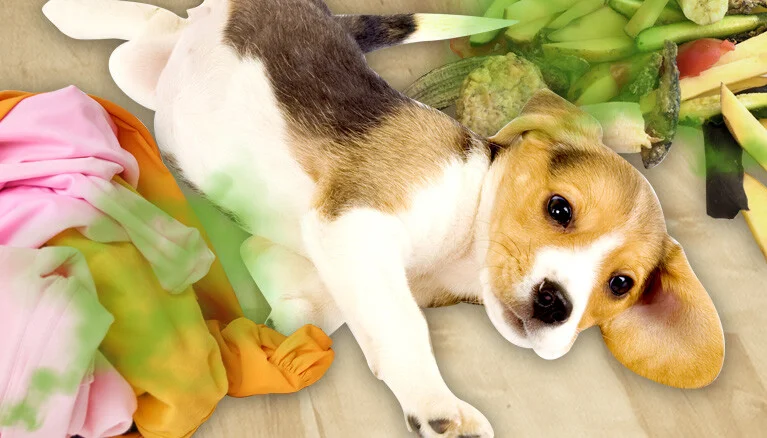Dogs are fascinating creatures with a myriad of behaviors that often leave us wondering about their motivations. One such behavior that has puzzled dog owners and researchers alike is Why Do Dogs Roll on Their Treats. It’s a peculiar sight to witness your furry friend enthusiastically receiving a delicious treat, only to immediately drop to the ground and roll all over it. While it may seem strange to us humans, this behavior is deeply rooted in the natural instincts and evolutionary history of dogs.
 To understand why dogs engage in this peculiar behavior, we must delve into their ancestral roots. Dogs are descendants of wolves, and despite their domestication, they still retain many wolf-like behaviors. Rolling on their treats can be traced back to their wild ancestors’ instinctive behavior of rolling on prey or objects to mask their scent. By doing so, they were able to hide their presence from potential predators or competitors.
To understand why dogs engage in this peculiar behavior, we must delve into their ancestral roots. Dogs are descendants of wolves, and despite their domestication, they still retain many wolf-like behaviors. Rolling on their treats can be traced back to their wild ancestors’ instinctive behavior of rolling on prey or objects to mask their scent. By doing so, they were able to hide their presence from potential predators or competitors.
Reasons of Why Do Dogs Roll on Their Treats
Here are some of the reasons Why Do Dogs Roll on Their Treats:
1. Behavior of Scent Masking
One of the primary reasons Why Do Dogs Roll on Their Treats can be traced back to their ancestral instincts. Dogs are descendants of wolves, and despite their domestication, they still retain many instinctual behaviors. Rolling on treats is reminiscent of their wild ancestors’ behavior of rolling on prey or objects to mask their scent.
By rolling on their treats, dogs may be attempting to hide the scent of the treat, making it less detectable to potential predators or competitors. This behavior served as a survival strategy in the wild, allowing them to protect their food source and avoid attracting unwanted attention.
2. Territorial Marking and Ownership
Another significant reason behind Why Do Dogs Roll on Their Treats is the instinctual need for dogs to mark their territory and assert ownership. Rolling on treats can be seen as a form of scent marking, similar to how wolves use urine or other bodily secretions to establish dominance and claim ownership over a particular area.
By rolling on their treats, dogs are essentially leaving their scent on the food, signaling to other dogs that it is their possession. This behavior serves as a form of communication, conveying a message that the treat is off-limits to other dogs and should not be approached or taken.
3. Sensory Pleasure and Stimulation
While the instinctual and territorial aspects play a significant role, it’s essential to recognize that dogs may also roll on their treats simply because they enjoy the sensation and stimulation it provides. Rolling can offer dogs a tactile and sensory experience that brings them pleasure.
Just like how humans might roll around in a pile of soft blankets or grass for the sheer enjoyment of the feeling, dogs may find rolling on their treats to be a pleasurable activity. It could be a way for them to engage their senses, experience different textures, and indulge in a moment of sensory delight.
4. Individual Differences and Environmental Factors
Why Do Dogs Roll on Their Treats? It’s important to acknowledge that not all dogs exhibit this behavior, and the intensity of rolling can vary among individuals. Some dogs may have a stronger inclination towards rolling on their treats due to their unique personality traits or genetic predispositions.
Additionally, environmental factors can also influence this behavior. The presence of other animals or the dog’s level of comfort and security in their surroundings can impact their likelihood of rolling on treats. Dogs may be more inclined to engage in this behavior when they feel safe and confident in their environment.
Practical Recommendations for Why Do Dogs Roll on Their Treats
Here are the recommendations for Why Do Dogs Roll on Their Treats:
1. Supervise Treat Time
To prevent excessive rolling on treats, it is essential to supervise your dog during treat time. By keeping an eye on them, you can intervene if they start exhibiting the rolling behavior. This allows you to redirect their attention and discourage the behavior when necessary.
2. Use Distraction Techniques
If you notice your dog starting to roll on their treats, distract them with an alternative activity or toy. Engaging them in play or providing a puzzle toy can redirect their focus and help them forget about rolling on the treat.
3. Teach the “Leave It” Command
Training your dog to respond to the “leave it” command is invaluable in managing their behavior around treats. By teaching them to leave the treat alone upon command, you can prevent them from engaging in rolling behavior or protect the treat from being contaminated.
4. Provide Sufficient Exercise and Mental Stimulation
Adequate exercise and mental stimulation are crucial for dogs’ overall well-being. Engaging your dog in regular physical activities and providing them with puzzle toys or interactive games can help satisfy their natural instincts and reduce the likelihood of excessive rolling behavior.
5. Offer Treats in Controlled Environments
Consider providing treats in controlled environments, such as a designated treat area or a specific mat or blanket. This can help create a clear association between the treat and the designated spot, minimizing the urge for your dog to roll on the treat elsewhere.
6. Seek Professional Help if Necessary
If your dog’s rolling behavior becomes excessive, compulsive, or disruptive, it is advisable to seek professional help from a certified dog trainer or animal behaviorist. They can assess the underlying causes and provide tailored strategies to address the behavior effectively.
7. Experiment with Different Treat Types and Textures
Some dogs may be more prone to rolling behavior depending on the texture or shape of the treat. Experimenting with different types of treats, such as harder biscuits or chewy options, may help reduce the urge to roll. Find treats that your dog can enjoy without feeling the need to engage in rolling behavior.
8. Practice Positive Reinforcement
Using positive reinforcement techniques, such as praise, treats, or clicker training, can be effective in shaping desired behaviors. When your dog avoids rolling on their treats or responds to commands appropriately, reward them with praise or a small treat to reinforce the desired behavior.
 Why Do Dogs Roll on Their Treats – Conclusion
Why Do Dogs Roll on Their Treats – Conclusion
While Why Do Dogs Roll on Their Treats may seem perplexing, understanding the reasons behind this behavior can help us address it effectively. By implementing these practical recommendations, we can manage and redirect the rolling behavior, ensuring a positive and enjoyable treat experience for both our furry friends and ourselves. Remember, patience, consistency, and positive reinforcement are key to modifying behaviors and strengthening the bond with our beloved canine companions.























 Why Do Dogs Roll on Their Treats – Conclusion
Why Do Dogs Roll on Their Treats – Conclusion